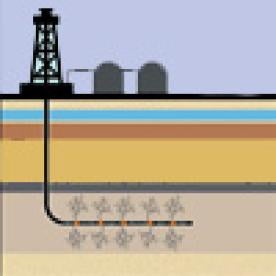The Bureau of Land Management’s (“BLM’s”) Hydraulic Fracturing Rule has been stayed until at least September 2015. BLM finalized the rule on March 20, 2015 for application on federal and Indian lands, three years after its initial proposal. However, on June 23, 2015 (the eve of the rule’s effective date), a federal judge in Wyoming stayed implementation of the rule siding with several industry group and state petitioners that had filed lawsuits and sought an injunction. As deadlines have now slipped, based on the current schedule, Judge Scott W. Skavdahl of the U.S. District Court for the District of Wyoming is not expected to make a final decision on the BLM Rule until September 2015.
Background and Rule Development
The day the final BLM Rule was published in the Federal Register, the Independent Petroleum Association of America (IPAA) and the Western Energy Alliance filed a petition for review of the BLM Rule under the Administrative Procedure Act. In their petition for review, the industry groups argued as follows:
BLM’s rulemaking represents a reaction to unsubstantiated concerns and the administrative record lacks the factual, scientific, or engineering evidence necessary to sustain the agency’s final rule. The rulemaking has been procedurally deficient and the final rule as issued is contrary to law. Because the regulatory conditions the final rule imposes constitute arbitrary and unnecessary burdens that either duplicate state law requirements or improperly curtail the primary jurisdiction of state governments, and because the regulations are not properly tailored to achieve a legitimate government purpose, the Court should find the rule invalid and set aside the challenged agency action.
Shortly thereafter, Wyoming, North Dakota, Colorado and Utah joined the lawsuit against BLM. On June 1, 2015, the states moved for a preliminary injunction citing irreparable harm and arguing that there would be no environmental harm if the rule was delayed because of robust state regulation already in place. After hearing arguments from both sides, on June 23, 2015, Judge Skavdahl ordered that the effective date of the rule be postponed pending submission of the administrative record, citing a “credible threat of irreparable harm” in the form of costs of compliance and lost revenues. Judge Skavdahl indicated that the administrative record was necessary to properly evaluate the arguments related to trade secrets and the cost of compliance. Judge Skavdahl stated his reasons for issuing the stay as follows:
“And I want to say this carefully: It’s a stay. This is not a granting of a preliminary injunction. It is a stay of the enforcement or application of these rules so that this Court can make a meaningful review and determination, given the serious and difficult questions as to the merits, in particular the authority to enact and the impact cost of compliance on the operators, as well as the impact upon the states, and the trade secrets potential application or compromise of trade secrets, given the rules and their enactment.” (Judge Skavdahl, Case No. 2:15-CV-041-SWS, June 23, 2015 Hearing Transcript, p. 264-265.)
Judge Skavdahl also noted that, when considering the balance of harms, a stay was appropriate given there are existing oil and gas regulations in place in 99.3 percent of the jurisdictions where the potential use of hydraulic fracturing would occur.
This week, Judge Skavdahl extended the deadline for filing of the administrative record until August 28, 2015. Judge Skavdahl has laid out an aggressive schedule for review that will kick off once the administrative record is filed. Once the administrative record is submitted, the parties are expected to have seven days to submit “citations to the administrative record in support of their positions.” The parties are not allowed to introduce additional arguments. Judge Skavdahl indicated during the June 23rd hearing that he would issue his ruling within two weeks of receiving the parties’ citations to the administrative record. Based on this schedule, we may not know the near-term fate of the BLM Rule until late September 2015.





 i
i


